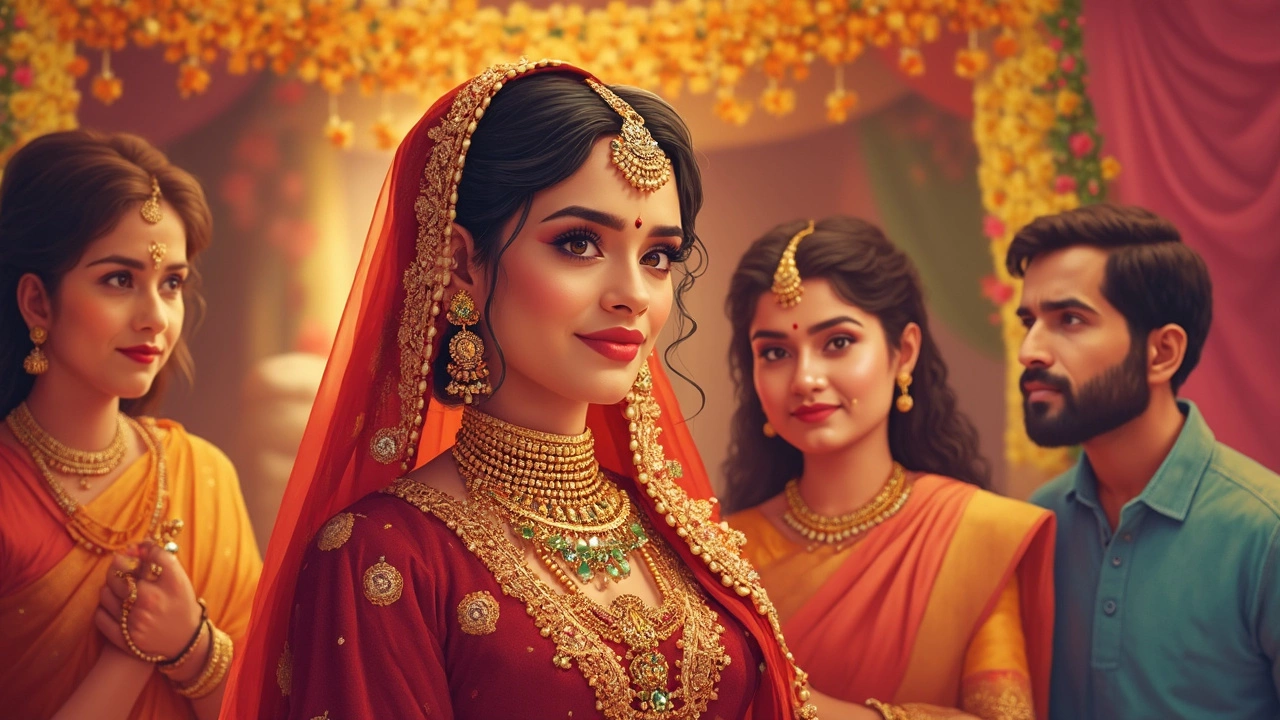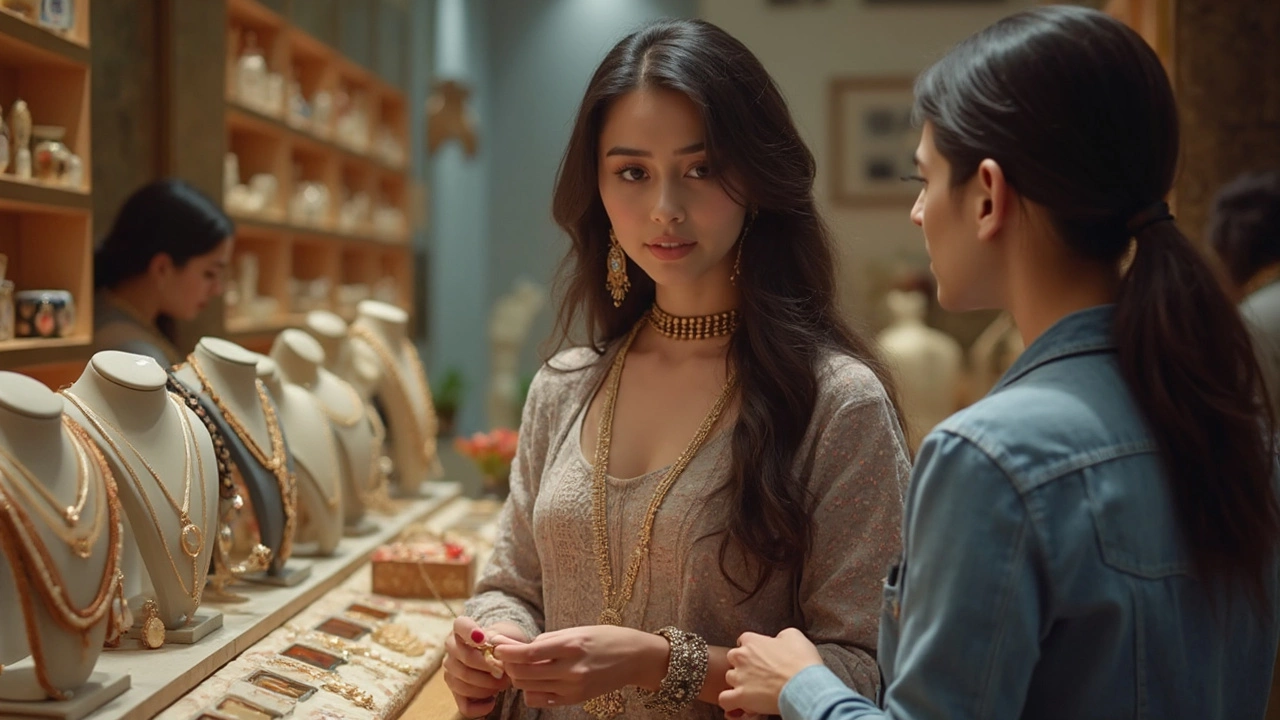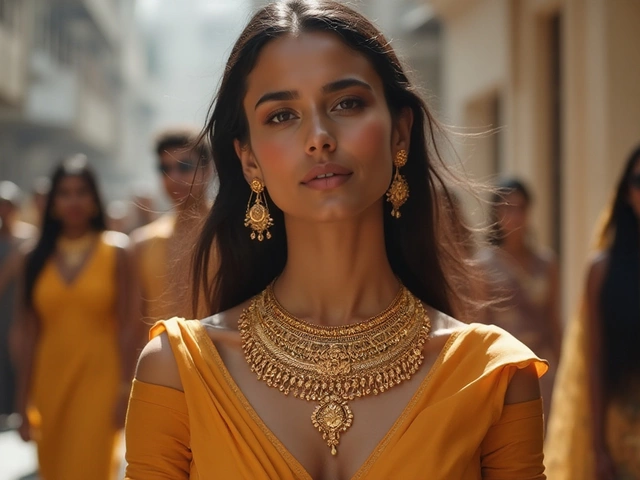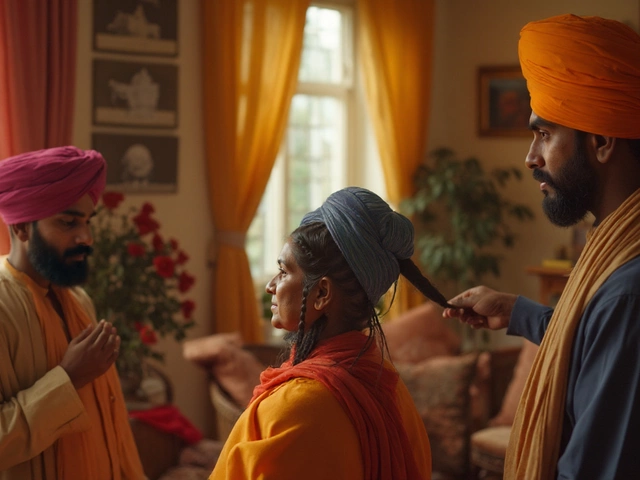
The mangalsutra isn’t just a piece of jewelry—it’s loaded with meaning, especially in Indian culture. You’ll spot it on countless married women, but have you ever asked which religion actually wears it? Simple answer: The mangalsutra is mainly a symbol in Hindu weddings, marking a woman’s married status. During the wedding, the groom ties it around the bride’s neck, almost like an unspoken promise to stick together for life.
But that’s not the whole story. In some regions, a few Christian and Jain communities have also started using the mangalsutra as part of their marriage traditions, often blending it with their own customs. Still, if you hear mangalsutra, think Hindu marriage first. The black beads? Those aren’t random—they’re said to protect against bad luck or negative energy. Pretty practical for something so stylish, right?
- Mangalsutra: The Religious Connection
- Tradition Meets Modern Life
- Regional Variations and Styles
- Tips for Choosing Your Mangalsutra
Mangalsutra: The Religious Connection
If you’re wondering where the mangalsutra fits in the world of religious traditions, Hinduism tops the list. The word itself comes from Sanskrit, “mangal” meaning auspicious and “sutra” meaning thread. During a Hindu wedding, the mangalsutra is tied by the groom as a lifelong promise to the bride. It’s not just decorative; it stands for trust, bond, and commitment. Almost every region across India has its version, but the idea stays the same — a visible symbol of marriage, much like a wedding ring in Western cultures.
You’ll mostly see the mangalsutra in Hindu marriages, but there are twisty details. Some Maharashtrian Christians and Jains have mixed it into their customs. For most Sikhs, Muslims, and Buddhists, though, the mangalsutra isn’t part of their ceremony. Instead, these groups use different items (rings, bangles, or scarves) as signs of marriage.
The belief around the mangalsutra isn’t just about showing marital status. Many families believe the mangalsutra, especially the black beads, act as a shield against the “evil eye” or any negative energy. The gold in it stands for well-being and prosperity. Here’s a breakdown of its religious significance:
- Hinduism: Most widely worn after the wedding ceremony (“Mangalya Dharanam” ritual).
- Christian (Maharashtra/Goa): Sometimes worn by brides, but style and ceremony differ from Hindu rituals.
- Jainism: Followed occasionally, depending on regional customs.
- Sikhism, Islam, Buddhism: Not a traditional practice.
Curious about how common it really is? Check this data table showing the main religions and whether mangalsutra is a standard wedding practice:
| Religion | Mangalsutra Used? | Other Marriage Symbols |
|---|---|---|
| Hinduism | Yes (across all regions, with regional styles) | Toe rings, bangles, sindoor |
| Christianity (West India, select communities) | Sometimes | Necklace with cross, wedding ring |
| Jainism | Rarely | Rings, bangles |
| Sikhism | No | Chooda (red bangles), rings |
| Islam | No | Rings, bracelets |
| Buddhism | No | Rings, scarves |
The bottom line? If you see a mangalsutra, you’re almost always looking at a Hindu wedding symbol, with a few exceptions depending on the region and community blend.
Tradition Meets Modern Life
Ever noticed how what your grandma wore as her mangalsutra looks nothing like the ones found in today’s jewelry shops? Times have changed, and so has this symbol. While the original mangalsutra is a must for Hindu brides, younger women aren't always sticking to the old designs. People now want something that fits their daily life and style, not just tradition.
Office-goers often pick lighter versions, sometimes even with single chains or simple pendants. Gold used to be the go-to, but now you’ll see diamonds, colored stones, or even platinum. Some women skip the classic black beads for a cleaner look, especially in urban areas. And it's not only about design—budget matters too. Not everyone wants to spend a bomb, so affordable options are everywhere.
Here's what’s trending with mangalsutras in the past decade:
- Minimalist styles—less bulky, easy to wear daily
- Patterns that double up as regular pendants
- Personalized touches like initials or meaningful charms
- Adjustable lengths to suit any outfit
But don’t get it twisted—just because something’s modern doesn’t mean the meaning is lost. A recent survey by a major Indian jewelry brand showed that 74% of married women under 35 still see the mangalsutra as a mark of respect and commitment, even if they pick creative designs.
| Year | % Women Wanting Modern Designs |
|---|---|
| 2012 | 37% |
| 2015 | 48% |
| 2020 | 70% |
| 2024 | 81% |
So while tradition runs deep, the mangalsutra isn’t stuck in the past. It's changing with fashion, necessity, and, honestly, with what looks good on Instagram. You can hold onto the cultural roots and still keep things fresh and comfortable.

Regional Variations and Styles
If you walk through different states in India, you’ll spot all kinds of mangalsutras. It’s not just one design everywhere—each region puts its own spin on it. For example, in Maharashtra, you’ll see a simple black-bead chain with two gold vatis (small bowl-shaped pendants). In Tamil Nadu, the mangalsutra is called ‘thali’ or ‘thirumangalyam,’ and it’s often a flat gold pendant, sometimes engraved with religious images. In Andhra Pradesh and Telangana, the design is more about small gold discs strung together, called ‘bottu’ or ‘sutram.’
Move north, and Punjabi brides prefer a more chain-like mangalsutra with a prominent pendant, sometimes sparkling with diamonds. In Gujarat, you might find a thinner black-bead chain, while in Bengal, the ‘loha’—an iron bangle—takes center stage instead of a mangalsutra, though newer trends are bringing both together.
Most designs use black beads because of the belief they guard against evil. Designs also change depending on personal taste. Some women pick single-strand chains for daily comfort, while others love elaborate double or triple chains for special occasions. Modern jewelers now mix gold with diamonds, tiny colored stones, or even minimalist pendants to fit a busy lifestyle.
To break it down, here are some famous styles and where you’ll usually find them:
- Hindu brides across South India: Thali, thirumangalyam
- Maharashtra: Vati mangalsutra
- Gujarat and Rajasthan: Simple black beads, sometimes with gold lockets
- Punjab: Diamond or gemstone-studded pendants
- Bengal: Loha often worn with a mangalsutra
Here’s a quick look at how different states show off their favorite mangalsutra styles:
| State/Region | Popular Name | Main Feature |
|---|---|---|
| Maharashtra | Vati Mangalsutra | Two gold bowls/beads |
| Tamil Nadu | Thali/Thirumangalyam | Flat gold pendant, engravings |
| Andhra Pradesh | Bottu/Sutram | Gold discs, thick chain |
| Punjab | Mangalsutra | Heavy pendant, diamond work |
| Gujarat | Mangalsutra | Simple, thin chain |
| Bengal | Loha & Mangalsutra | Iron bangle + chain |
Designs keep evolving. With more women working and people living in cities, lightweight, practical pieces are trending. But ask any goldsmith, and you’ll still find brides wanting a piece that feels both modern and deeply tied to their roots.
Tips for Choosing Your Mangalsutra
Picking the right mangalsutra is more personal than people think. It isn’t just a tradition—it’s something you’ll likely wear every day. So if you want it to actually fit your life and style, you need to consider a few key things.
- mangalsutra Design: Classic gold, simple black beads, or diamonds? Traditional South Indian mangalsutras often have heavy gold pendants, while Maharashtrian designs use two vatis (cups) and shorter chains. North Indian styles usually have a long black-and-gold beaded chain with a pendant that can be as fancy or as minimal as you like.
- Chain Length and Weight: Planning to wear it daily? Lightweight, shorter chains are less likely to get tangled or snagged. If you’re into layering jewelry, a sleeker design works better. Typical lengths are 16, 18, and 22 inches.
- Pendant Style: Go for a pendant that actually means something to you. Some women like simple geometric shapes, religious symbols, or even initials. If you work in a job where jewelry needs to be subtle, there are plenty of small, modern designs out there.
- Allergies and Skin Sensitivity: Skin allergies to certain metals, especially nickel, are common in India—around 10-15% of people are affected. Look for pieces that have hallmarked gold or hypoallergenic materials if this is you.
- Locking Mechanism: Seriously, make sure the clasp is good. Many lose their mangalsutras thanks to flimsy hooks. Go for a lobster clasp or a screw-type lock for everyday security.
- Budget: It’s smart to set a budget before heading to the jeweler. Prices range from INR 5,000 for light gold/black-bead models to INR 1+ lakh for chunky, diamond-studded ones. The table below lays out some average price ranges in India as of 2024:
| Design Type | Gold Purity | Chain Length | Average Price (INR) |
|---|---|---|---|
| Basic Gold & Black Beads | 22K | 18-22 inches | 5,000 – 20,000 |
| Diamond Mangalsutra | 18K/22K | 16-22 inches | 30,000 – 1,50,000 |
| Traditional Maharashtrian Vati | 22K | 15-18 inches | 25,000 – 70,000 |
Lastly, don’t skip checking for a BIS hallmark for gold purity and a reliable return policy at the jewelry store. Whether you want mega-traditional vibes or a piece that looks cool with jeans and tees, the right mangalsutra should match your lifestyle—not just the ceremony.


